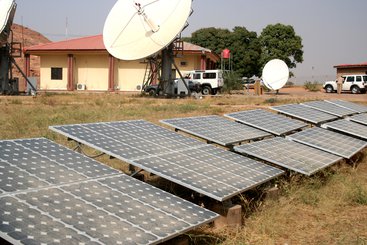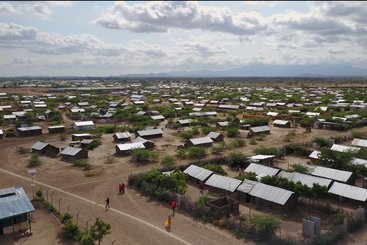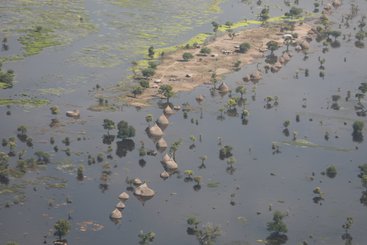Afghanistan is facing one of the world's most complex crises. The country's economy has collapsed following the delinking of Afghan banks from the global financial system and the freeze on foreign reserves. Development assistance has been largely paused. A large humanitarian catastrophe was only averted following the largest relief effort in the country's history. Climate change has made natural hazard-related disasters, such as drought and flood, more prominent and longer lasting, destroying traditional livelihoods, reducing crop yields and raising food prices. Six million Afghans forced to leave their homes between 2012 and 2021 due to climate change and/or conflict remain internally displaced.
Last year, in the lead-up to COP 26 in Glasgow, the newly formed Islamic Emirate of Afghanistan (IEA), controlled by the Taliban, made a statement that the international community should do more to support Afghanistan with climate change projects, both to help mitigate the effects of climate change and to provide job opportunities for people. Many of these projects had already been approved and funded, but put on hold following the change in government in August 2021.
The Taliban were right last year, and they are still right today, though little has been done in the past 12 months to restart projects aimed at climate change mitigation.
Forthcoming HPG research on climate change, conflict and displacement shows that in Herat, Afghanistan, IDPs are unable to employ the same coping strategies and adaptions as members of the host community, and that the extreme strategies they are often forced to turn to – child labour, early marriage of daughters, selling children and selling kidneys – are still not enough to meet the overlapping and intersecting challenges of climate change, conflict and displacement.
While the conflict has somewhat abated, and the 2021 change in government brought stability and security to many parts of the country, a return to rural livelihoods remains impossible for many IDPs in Herat due to ongoing drought. This leaves many IDPs in a position where they must rely on humanitarian assistance, which is not nearly enough to meet their needs, while the development projects that could help them return to their previous livelihoods remain at a standstill due to a pause in development funding. Without access to water, both life and livelihoods in many parts of rural Afghanistan will be impossible.
Funding development projects remains a controversial issue for donor countries due to ongoing sanctions and a lack of formal engagement with the IEA. But there is still a role for donors to play in helping Afghanistan adapt to climate change in a way that supports those who are suffering the most, but have done little to contribute to it. Climate change could be an entry point for engaging with the IEA in a desecuritised and depoliticised way, as it is an issue that both the Taliban and the international community agrees on. By focusing on development projects that target the impacts of climate change, international organisations could also meet global commitments such as Sustainable Development Goal 13 to take urgent action to combat climate change and its impact. And, at the same time, they could be making a substantial difference to the lives of all Afghans in need of assistance.



